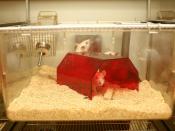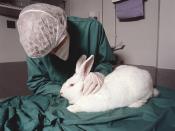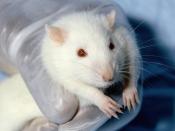Every year, nearly 100 million animals die in research laboratories at the hands of curious scientists who perform outdated and inaccurate tests that prove no benefit to humans or animals. Before these animals die, they are routinely burned, scalded, poisoned, starved, given electric shocks, addicted to drugs, subjected to near freezing temperatures, dosed with radioactive elements, driven insane, deliberately inflicted with diseases such as cancer, diabetes, oral infections, stomach ulcers, Syphilis, herpes, and AIDS. Their eyes are surgically removed; their brains and spinal cords damaged, and their bones broken. The usage of anesthesia is not mandated by law, and consequently, thus is rarely administered. Despite all of this cruelty, not a single disease has been cured through vivisection in this century. The overall adult cancer rate has risen in the past 40 years and a fatal heart attack strikes a person every 45 seconds.
The Centers for Disease Control estimate that 70-80% of the common diseases killing Americans are preventable given a responsible diet and lifestyle.
Drug testing on animals is inaccurate and does not benefit humans or animals at all. Animals including, but not limited to, dogs, cats, mice, rats, guinea pigs, hamsters, gerbils, rhesus monkeys, imported primates, owls, deer, sheep, llama, and cattle are commonly used for vivisection. Vivisection is the medical term for the practice of experimenting on animals. Charles River Breeding Laboratories, a company owned by Bausch and Lomb, provides 40-50% of the animals used in experiments of laboratories. The other remainig misfortunate animals come from places a little closer to you and me. Some of them come from animal shelters, some come from the "free to good home" ads in the classified section of the newspaper, some from unsuspecting people who allow their companion animals to become pregnant, or even worse, some have been...


